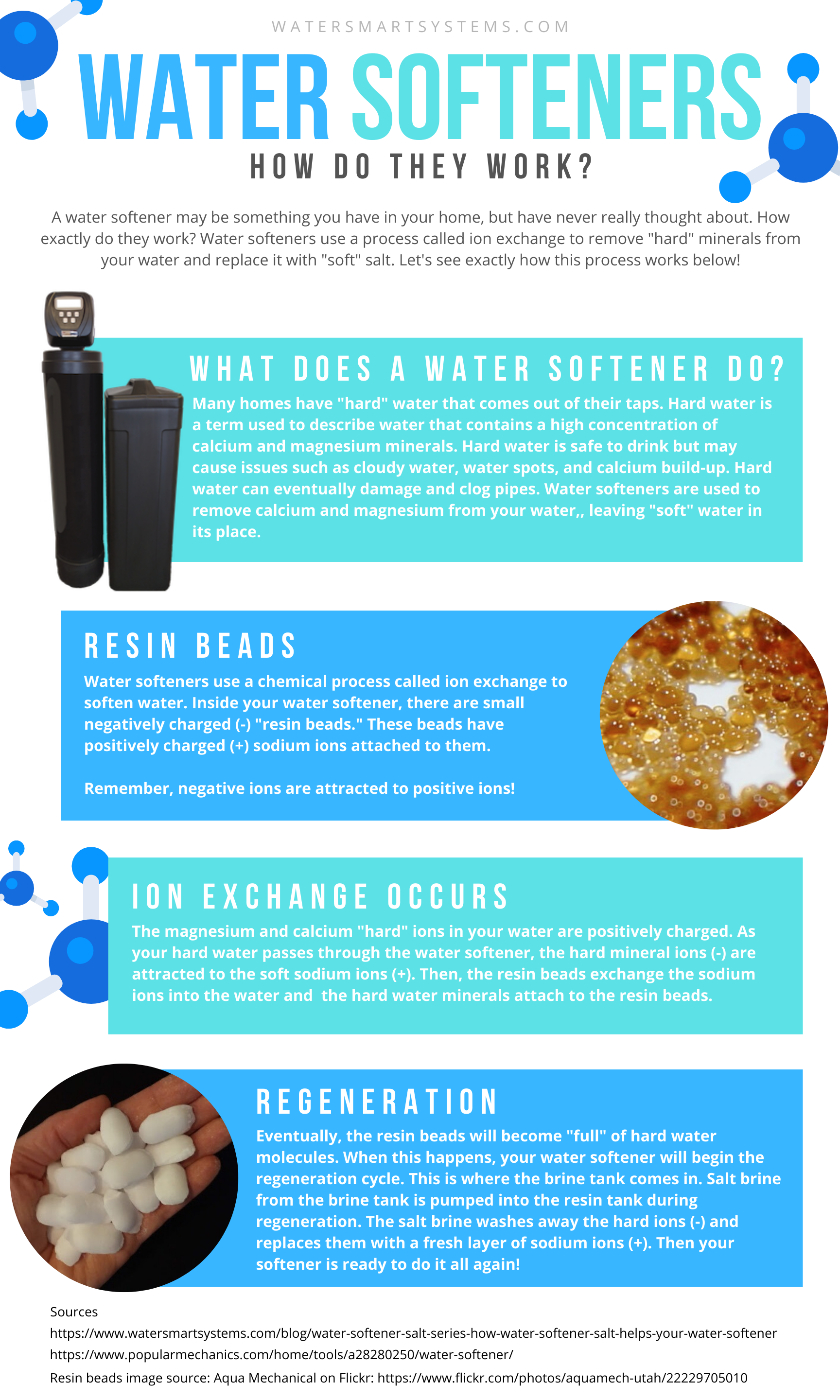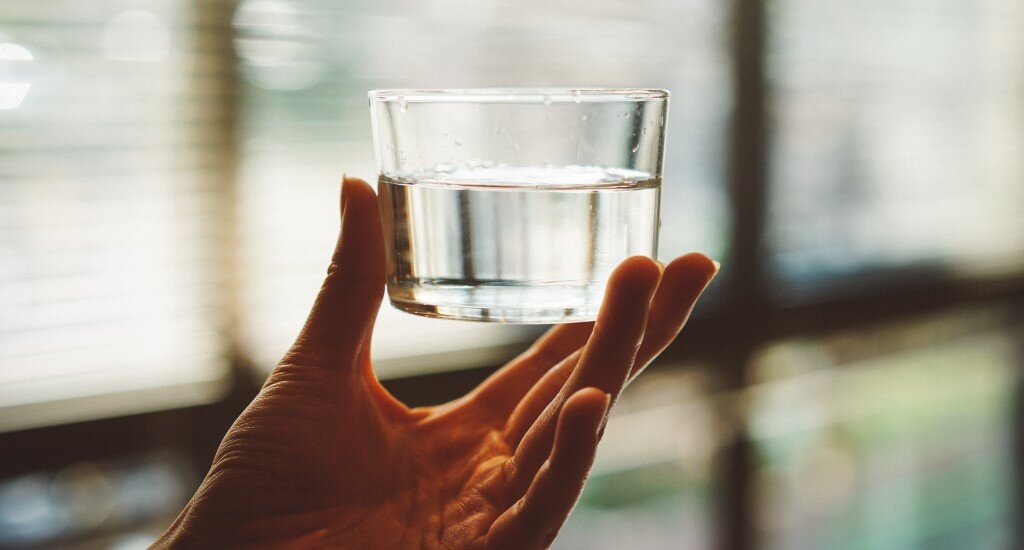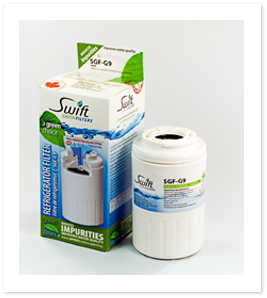Here is a quick summary of how the most popular home water purification systems work:
Water Softeners use a process called ion exchange to remove minerals such as calcium and magnesium from your hard water to make it soft.
Reverse Osmosis is a system that forces water through a semi-permeable membrane that traps any impurities that are too big to pass through its tiny holes.
Fridge Water Filters have a large internal surface that traps contaminants and then the carbon in the filter works like a magnet to attract compounds like lead and allows only the filtered water to pass through.
Click on the above links for a detailed explanation of each of the home water purifications systems. If you would like to improve the quality of your water, contact us today.
Discover how home water purification systems work
How Home Water Purification Systems Work
Water Softeners:
Here is how a water softener works.
Step 1: Hard water is pumped into the resin tank
Hard water is pumped into a tank full of resin beads. These beads have a negative charge.
Step 2: Hard water minerals are removed from your water
The calcium and magnesium minerals that make your water hard have a positive charge. Once they enter your resin tank these positively charged minerals are attracted to the negatively charged resin beads and they stick to them. This process successfully removes the minerals from your water, making it soft.
Step 3: Soft water is available for use in your home
The water that flows out of your resin tank has had its minerals removed and the resulting softened water is now available for use in your home.
Step 4: Your water softener performs a regeneration cycle
Periodically your water softener will perform a regeneration cycle where a salt solution from your brine tank will rinse the resin beads. The negatively charged sodium ions in salt have a strong enough negative charge so that they can attract and remove the positively charged minerals on the resin beads.
The calcium, magnesium and sodium are then flushed away down your drain. This process will clean your resin beads, making them ready once again to soften your water.
Pros and Cons of Water Softeners:
Pros:
A water softener can help you solve the following hard water problems:
Difficulties getting dishes or laundry clean
Damage to your clothing, causing them to wear out faster
Scale buildup in your washing machine, dishwasher, water heater and other appliances that use water
Your skin and hair feel dry
Stains in your sink, toilet, shower and bathtub
Plumbing pipe damage
Cons:
If for health reasons you are on a sodium-reduced diet, you may be hesitant to use a water softener.
The amount of sodium added in the water softening process is minimal compared to a healthy individual’s diet. Most health concerns are related to excessive sodium chloride, not sodium bicarbonate which is a compound that results from using a salt-based softener.
Water softeners can give you cleaner dishes
Reverse Osmosis:
Here is an explanation of how reverse osmosis works
Step 1: Tap water is pre-filtered
During the initial filtration stage, tap water or well water (pressurized by a booster pump) is passed through a particle filter (a pre-filter) that removes silt, sediment, sand, and clay particles that might clog the R/O membrane.
Step 2: Water passes through a carbon filter
The water is then forced through an activated carbon filter that traps minerals and contaminants such as chromium, mercury, copper, chloramine and pesticides. It also removes chlorine, which is important, as chlorine will shorten the life of the membrane.
Step 3: Water is transferred into the reverse osmosis module
Water is transferred under pressure into the R/O module, allowing only clean water to pass through the small pores in the membrane. Impurities unable to pass through the membrane are left behind and flushed down the drain.
Step 4: Water goes through a second carbon filter
Treated water is then sent to a storage tank. Treated water is passed through an activated carbon filter before use to further improve the water's taste and smell.
The Duro Reverse Osmosis System, available at WaterSmart, features pre and post-carbon block filtration. The carbon filter acts as a complementary measure to block dangerous chemicals like pesticides, herbicides and chlorine, which are small enough to pass through the reverse osmosis filter.
Reverse osmosis is one of the most thorough home water purification systems
Pros and Cons of reverse osmosis:
Pros:
Reverse Osmosis units produce no noise other than the sound of water discharging into the drain (usually a sink or a floor drain).
Reverse osmosis systems do not need to use salt or potassium chloride to produce soft water, so there are no added ions. This is a good solution for people concerned about additional sodium.
If you get your drinking water from a private supply such as a well, it may not be safe from microbiological, chemical, or other types of contamination. A reverse osmosis system can remove these harmful contaminants for you.
Reverse osmosis can remove dissolved solids, salts, minerals that cause hardness, organic chemicals and other impurities.
R/O systems can improve the taste of water for people who do not like the taste of dissolved mineral solids.
Treated water will not produce scale in kettles and coffee makers.
Because sodium and potassium are removed, people on a medically prescribed sodium or potassium-restricted diet may benefit.
R/O units may also remove contaminants such as chromium, mercury and nitrates.
Cons:
ROI units are usually more expensive than ion-exchange softeners but much cheaper than distillers.
The membranes used in the filtering process need to be replaced regularly.
Uses more water than other softening systems to operate
Reverse osmosis can remove most contaminants from your water
Fridge Water Filters:
Here is how a fridge water filter works:
Step 1: Water enters your filter
Water is forced through activated carbon that is located inside your fridge filter.
Step 2: Carbon attracts certain contaminants
The carbon in your filter will attract contaminants that are present in your water much like a magnet attracts metal. These contaminants will stick to the carbon, thus removing them from your water.
Step 3: Dispense filtered water
The resulting contaminant-free water will then be available through your fridge's dispensing unit.
Fridge water filters are one of the least expensive home water purification systems
Pros and Cons of Fridge Filters:
Pros:
Fridge water filters are a very convenient and inexpensive way to get filtered water.
Cons:
Once they have removed a certain amount of contaminants, fridge filters are no longer effective. They need to be replaced periodically, usually about once a month.
Even though fridge filters are relatively inexpensive to replace, they cannot remove as many substances from your water as a reverse osmosis system can.
Home Water Purification Systems - Why Choose WaterSMart?
WaterSmart has been serving the Waterloo region including, Kitchener, Cambridge, Guelph, Brantford, and surrounding areas since 1994 with innovative home water purification systems.
We are committed to helping you improve the quality of your home's water. We live and work in the Kitchener-Waterloo region so we understand the hard water challenges of this area. We know how to program your water softener for maximum efficiency and are familiar with the types of water softener repairs that you might need.
Contact WaterSmart today to book an appointment.
“What a great experience!! I did a search on the internet, called regarding the price of a water softener and the next day it was installed and we had soft water again. Paul removed the old softener, installed and setup the new one and was out in just over an hour. He also noted that the grounding of water pipe was not done by previous installer and he corrected that as well. Cost was the same as softener that was installed 14 years ago - I am impressed.”









